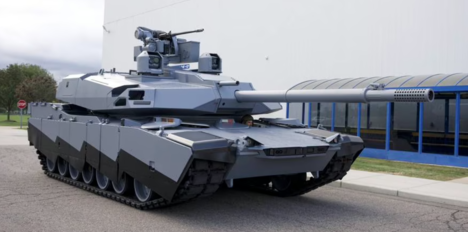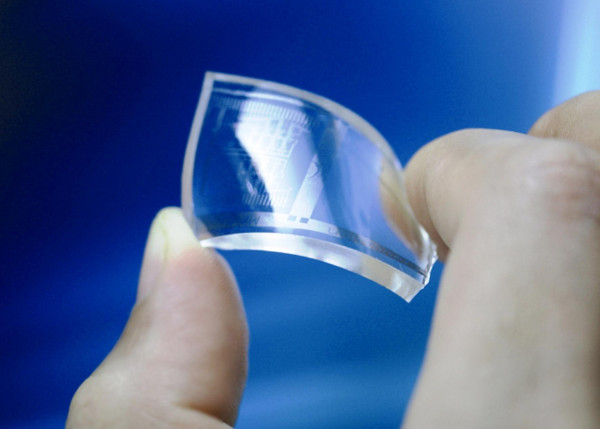Dear Reader,
Feast your eyes on the next big thing in main battle tank (MBT) technology.
This is the AbramsX, a prototypical evolution of the legendary M1 Abrams tank — a mainstay of the U.S. Army’s heavy armor divisions for the last four decades.

While various versions of the Abrams have been in service since 1980, the AbramsX is the first of its kind thanks to a major departure from traditional fossil fuel-fed power plants.
You see, the AbramsX is a hybrid, combining the high-torque turbine that's powered every iteration of the tank since its inception with an equally potent system of electric motors.
Let me answer the obvious question that this begs: No, the DoD does not care about the carbon footprint of its apex predator of the battlefield.
What it is concerned with is range and stealth — two factors that can substantially increase battlefield performance and crew survivability.
Electric motors, aside from being nearly silent and highly resistant to excess heat production, also present substantial advantages in size/torque ratios, which means the next generation of American tanks will do more with less. Join Wealth Daily today for FREE. We’ll keep you on top of all the hottest investment ideas before they hit Wall Street. Become a member today, and get our latest free report: “How to Make Your Fortune in Stocks”The Best Free Investment You’ll Ever Make
It contains full details on why dividends are an amazing tool for growing your wealth.
DoD: All Battlefield Ground Vehicles May Soon Be EVs
The AbramsX, while only a concept, hints at a future where most if not all battlefield vehicles will be motivated by electrons, not internal combustion.
There is, however, a problem… and if you guessed it's the batteries, you’re right.
Lithium batteries, in case you’ve been living in one of Vladimir Putin’s bunkers for the last decade or two, are anything but battlefield-capable.
Aside from being very slow to charge and fairly limited in overall charge capacity, they’re also extremely prone to spontaneously catching fire.
Google "lithium fire" and you’ll see what I mean. Hardly a day goes by that there isn’t a major lithium battery fire in New York, Los Angeles, or any other major American city.

Between 2020 and 2022, the number of such fires in NYC grew by a factor of five — causing enough of a panic to motivate city lawmakers to start drafting laws controlling the sale of refurbished lithium batteries and even the storage of certain lithium-powered devices.
Why Your Phone Could Double As a Hand Grenade
The flaw that turns lithium batteries into potential incendiary devices isn’t something that’s easily fixed, as it’s a fundamental component of the design DNA.
These fires often start after lithium batteries sustain minor damage during regular usage, damage that contributes to thermal runaway, boiling the liquid electrolyte until dissolved gases — namely oxygen — begin to precipitate out of the solution.
If you've ever seen a battery swell or "puff out" inside of its casing, that's precisely what's going on.
Very often, however, the fires start with no provocation whatsoever.
Aging batteries produce unmanageable levels of resistance during regular charging. That resistance produces heat. Enough of that heat, and, well, you can check the headlines and see for yourself how it ends.
This is a frightening enough prospect when we’re talking about civilian-operated cars, but it becomes exponentially more dangerous when the vehicle in question contains tons of ordnance and is expected to absorb artillery fire, anti-tank land mines, and high-explosive armor-piercing warheads.
That means that while the DoD may have major plans for the EV on tomorrow’s battlefield, it certainly cannot be powered by anything resembling today’s benchmark for rechargeable battery power.
Is Lithium the New Coal?
Today, that benchmark may finally have met its match.
A next-generation battery that contains no lithium to speak of and no potentially explosive liquid electrolyte has already been developed for the consumer market.
The cathodes at the heart of these batteries are made of a space-age material called graphene, a man-made "nanostructure" that’s engineered on a molecular level.
Just a few years ago, graphene was a science project. At the start of the last decade, it even won its chief researchers the Nobel Prize in Physics.

Thanks to some revolutionary leaps in production technology, however, it’s only recently become cheap and abundant enough to finally see implementation in mainstream applications.
The resulting batteries are nothing short of mind-blowing in terms of performance.
We’re talking about over twice the energy density, up to three times the service life, up to 70 times the charge speed (imagine being able to charge your smartphone from dead to 100% in 30 seconds), and, of course, orders-of-magnitude improvement in reliability and resilience to damage.
Not Your Daddy's Rechargeable Battery
These batteries can take withering abuse — including actual gunfire — and not only remain stable, but actually continue to operate.
All of these elements put together into one package completely changes the game, and not just for potential military applications, but for all things on the consumer level as well from wireless devices to distributed energy storage solutions.
The technology that made all of this possible comes to us from an unlikely source.
A small, young, almost unknown player in the high-tech materials field based in Australia is developing not only the batteries, but the graphene production method that makes all of this possible on a mass scale.
I’ve been following this company for some time now, but for most of that time things have been relatively quiet in terms of public relations.
These days, however, few things resonate with the tech investment community the way that rechargeable batteries do.
These mini power plants are the future. There’s no getting away from it.
And because this company is already publicly traded, there is no better time for savvy, future-thinking investors to get involved.
Already Trading on Two North American Exchanges
By the end of the decade, it is quite possible that the quarter-trillion-dollar-per-year lithium-ion sector could be nothing more than an empty shell of its former self, following the same path of decline that VHS did after the advent of DVDs, or dial-up internet after the advent of high-speed and Wi-Fi connectivity.
As of this morning, the company behind all this was trading at a market capitalization of US$150 million.
That’s less than 1/1,000th the size of some of the world’s premier lithium-ion battery producers (most of them Chinese).
In a year or two, we could easily be looking at a 10–100x increase in that market capitalization as the new technology disrupts, and eventually destroys, the old paradigm.
Want to learn more? With the summer trading rut approaching, there's no better time than now.
Start your due diligence with this quick, instant-access investor presentation.
Fortune favors the bold, Alex Koyfman His flagship service, Microcap Insider, provides market-beating insights into some of the fastest moving, highest profit-potential companies available for public trading on the U.S. and Canadian exchanges. With more than 5 years of track record to back it up, Microcap Insider is the choice for the growth-minded investor. Alex contributes his thoughts and insights regularly to Energy and Capital. To learn more about Alex, click here.


